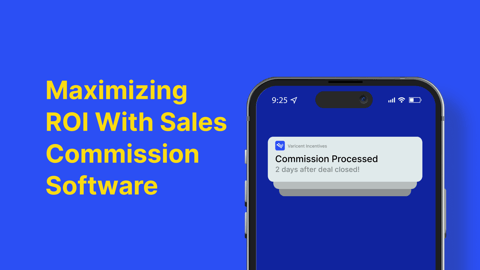Key Takeaways
-
Clear Lead Status Options: Implement straightforward and consistent Salesforce lead status options—Raw, Assigned, Working, Qualified, Nurture, and Unqualified—to enhance lead management and communication.
-
Alignment of Sales and Marketing: Ensure alignment between sales and marketing teams, improving the efficiency of lead handling and reducing confusion.
-
Improved Lead Tracking and Reporting: Enhance the ability to monitor, report, and analyze lead performance, providing valuable insights for informed decision-making.
-
Avoiding Jargon: Use plain-language terms to replace acronyms like MQL and SQL, making it easier for all team members to understand and follow the lead management process.
Take a deeper dive...
What is a Salesforce lead status?
A Salesforce lead status is a default field in Salesforce and one of the most important fields to have set up, working, and being used in a consistent way across your revenue organization. Understanding the Salesforce lead status is crucial for an effective lead management process.
Default Salesforce lead status options:
-
Open
-
Contacted
-
Qualified
-
Unqualified
Although Salesforce comes with default values for the standard lead status field, we will walk through a new set of values to implement and use to improve the way your sales reps work and allow management to report on lead performance in a better way.
What are Salesforce lead status options used for in lead management?
The Salesforce lead status – like many other default fields in Salesforce – is used for two main things:
-
For sales reps to manage and organize their leads
-
For managers and executives to monitor and report on leads in a consistent way
In our recent blog about Salesforce deal stages, we said that the purpose of deal stages was to give sales reps a way to communicate internally about their funnel in a consistent way. The same is true for Salesforce lead status options. These statuses also play a vital role in lead qualification, helping to assess and rank leads based on their likelihood of becoming customers.
The purpose of the Salesforce lead status field is to give sales reps a way to communicate internally about their lead funnel in a consistent way.
The first of the three pillars of The Measurable Lead Model is to be Clear. That is exactly what your Salesforce lead status options should be – Clear
Implementing lead scoring can further enhance the clarity and effectiveness of your lead status options.
That means no more acronyms:
No more MQLs. No more SALs. No more SQLs.
Acronyms are generally used to shorten a phrase and provide simplicity, but when it comes to the lead status options you choose to add to Salesforce, they end up creating confusion.
Take MQL, for example, the term MQL has been around for ages, but if you ask people in your organization – some from Marketing and some from Sales – what an MQL is, you’re going to get different answers. It’s very name creates tension: Marketing owns it, Sales has their own definition to accept and qualify it, and Operations measures it.
That’s why your Salesforce lead status options should be obvious, plain-language names that can be easily understood from your newest sales rep that just graduated from college, all the way up to C-level executives and your Board.
In this blog, we’ll identify and walkthrough what 6 lead status options you can use in your business to avoid confusion and build alignment between Marketing and Sales.
The 6 best Salesforce lead status options
Raw Leads
Raw leads – who could also be considered subscribers – are people in your database that you know but aren’t ready for Sales to work yet.
These leads should be owned by Marketing inside of the Marketing funnel. It’s Marketing’s job to warm these leads up and get them to take an action that indicates they are ready to be worked by sales. Effective collaboration between sales and marketing teams is crucial at this stage to ensure leads are properly nurtured.
When a Raw lead is ready to be worked they should move to the next stage: Assigned.
Assigned Leads
An Assigned lead – who you might think of as an MQL or target account – is someone who is expected to be worked by sales but hasn’t yet. A lead may be assigned when:
-
They hit a score from behavior or demographic data
-
They perform a specific action like requesting a demo
-
They are pulled out of an outbound queue, such as a list from a tradeshow or recycled leads
-
They are a member of a target account who meets one of the criteria above
As soon as a lead enters an Assigned status, it starts a clock. That clock runs until the sales rep starts working it (by logging their first sales touchpoint) to give you your lead response time. Tracking the sales cycle from this stage helps in setting realistic sales goals and optimizing the time to close deals.
Leads move on from the assigned status when, and only when, the assigned sales rep logs the first sales activity to the next stage: Working.
For more on Lead Response Times, check out this blog: Stop Leads Falling Through the Cracks With a Lead Response SLA That Works
Working Leads
The Working Salesforce lead status option is an active one where the sales rep is attempting to do a few things:
-
get in contact with the lead,
-
qualify the lead,
-
and determine if the lead is in a buying cycle or not.
This stage is a critical part of the lead management process, requiring a structured approach to ensure leads are properly qualified.
While the lead is in a Working lead status, it should be managed by the sales rep in a sequence or cadence by a sales engagement tool like Outreach or Salesloft where there is a structured amount of sales activity (emails, calls, social interactions) over a set amount of time.
All leads leaving the Working lead status must be dispositioned based on what the sales rep finds out (or isn’t able to find out) while working the lead.
ALL leads must be dispositioned from the Working lead status, otherwise they end up sitting there forever clogging up the lead funnel.
Leads should be dispositioned based on the lead’s qualification and their current buying intent ( they are in a buying cycle now, not now, or never will be.)
If the lead is qualified and in a buying cycle now ? Qualified
If the lead is qualified, but not in a buying cycle now ? Nurture
If the lead is unqualified and therefore will never be in a buying cycle ? Unqualified
Qualified Leads
The Salesforce lead status option of Qualified should be thought of as people ready to buy now.
When a lead reaches this status they should be converted to a Salesforce Contact and an Opportunity should be created. At this point, your pipeline management process should take over and they should be moved through the Opportunity stages until they are closed-won or closed-lost. Reaching this status is the result of a thorough lead qualification process.
For more on creating and naming Opportunity stages: 5 ways sales cadences are killing your leads (and 3 ways to revive them)
Nurture Leads
A Salesforce lead status option of Nurture indicates that the lead is qualified but is not in a buying cycle right now. So your goal as a business is to keep them interested – or warm – until they are in a buying cycle. You do that by “nurturing” the lead. Ongoing lead scoring is essential to ensure that nurtured leads are re-evaluated and moved to the appropriate status when ready.
Nurture programs in most organizations are severely misunderstood, as many people believe them to be marketing drip programs like a weekly newsletter. What Nurture programs should look like are structured programs that are a mix of marketing automated messages and consistent outbound efforts – both of which should be connected to a Nurture reason.
Nurture reasons exist to prevent the Nurture lead status from becoming a dumping ground for leads that sales reps don’t want to work. Everytime a lead is dispositioned to the Nurture status, a nurture reason should be required so the lead can be nurtured effectively.
Good nurture reasons define why timing is wrong:
-
Budget not available for 6+ months
-
Product missing key feature for use case
-
Prospect is re-evaluating internal processes
Bad nurture reasons are ambiguous:
-
No budget
-
Not a fit
Unqualified Leads
A Salesforce lead status option of Unqualified should only be used if the person or organization will never buy.
Some companies choose to have a status of Disqualified, which sounds pretty much the same, but there’s a key difference in how it can be interpreted by your organization. Unqualified means the person or company does not meet objective criteria, while disqualified means the sales rep reviewing the lead is subjectively choosing not to proceed. Properly categorizing unqualified leads is a crucial aspect of effective lead management.
The best option for your Salesforce lead statuses for successful lead management
The purpose of the Salesforce lead status field is to give sales reps a way to communicate internally about their lead funnel in a consistent way.
That means eliminating acronyms – like MQL and SQL – from your Salesforce lead status options and replacing them with plain-English terms that are easily understood from a sales rep on their first day to the Board.
The 6 essential Salesforce lead status options that every company should use are:
-
Raw
-
Assigned
-
Working
-
Disposition
-
Qualified (now)
-
Nurture (not now)
-
Unqualified (never)
By using and implementing these Salesforce lead status options, you’ll make it clear to sales reps how to move prospects through the lead funnel, you’ll boost alignment between Marketing and Sales, and you’ll improve the ability for management to measure and report on lead performance. These statuses are integral to the Salesforce lead management process, ensuring seamless integration with Salesforce features.
After you’ve spent time looking at the statuses for the Lead object, the next step is looking at the Contact object in Salesforce or you’ll end up missing out on a number of opportunities. This blog is a great resource to look at next: How to think about Leads vs. Contacts in Salesforce.
Start analyzing rep performance for free
Three revenue operations reports included:
-
Sales performance (how has the team performed recently)
-
Pipeline management (how is the team performing right now)
-
Pipeline hygiene (how are sales reps managing deals in Salesforce)
How to effectively manage leads through the sales funnel?
When it comes to managing leads effectively through the sales funnel, it’s crucial to have a clear strategy that encompasses everything from initial contact to final conversion. One of the key insights shared by industry leaders is the importance of meticulously managing the lead lifecycle, ensuring that each lead is nurtured and guided through the process seamlessly. Whether it’s defining what constitutes a quality lead or having a robust follow-up strategy, these elements are fundamental to optimizing conversion rates and driving business growth.
For a more in-depth look at how top professionals manage leads through the full sales funnel, you won't want to miss our detailed interview. Amrita shares invaluable tips on lifecycle management, the importance of SLAs between sales and marketing, and effective follow-up tactics. Read the full interview here if you're ready to take your lead management to the next level. Don't let potential leads slip through the cracks—discover proven strategies to enhance your lead management process and boost your conversions today!
Seamless Lead Conversion Processes
Effectively managing leads through the Salesforce lead funnel is vital for aligning sales and marketing efforts and ensuring a seamless lead conversion process. By implementing clear and straightforward Salesforce lead status options—Raw, Assigned, Working, Qualified, Nurture, and Unqualified—you can streamline communication, prevent confusion, and accurately track lead performance. This approach not only enhances the efficiency of your sales reps but also provides valuable insights for management to make informed decisions. By focusing on these best practices, businesses can improve their lead management processes, reduce lead leakage, and ultimately drive greater revenue growth.




